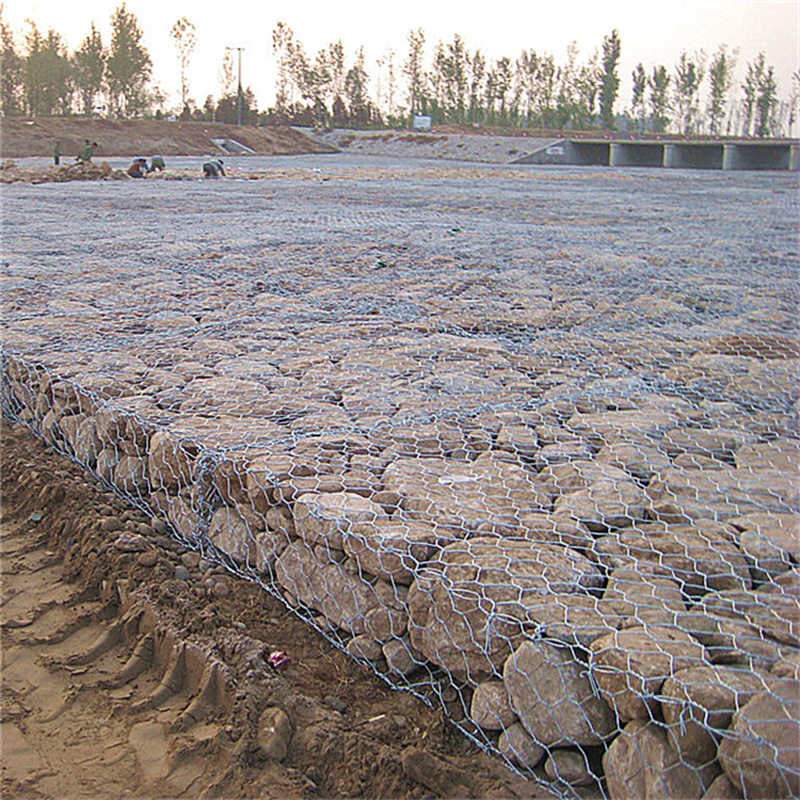12월 . 03, 2024 23:37 Back to list
Building Steps with Gabion Cages for a Durable Outdoor Design
Gabion Cage Steps An Innovative Approach to Landscape Design and Structural Integrity
In the ever-evolving world of landscape architecture and civil engineering, gabion cages have gained significant attention for their versatility, durability, and aesthetic appeal. A gabion cage is a cage or box filled with materials such as rock, concrete, or soil, utilized in various applications, including retaining walls, erosion control, and landscaping features. This article explores the concept of gabion cage steps, examining their benefits, construction methods, and potential applications in both residential and commercial settings.
Understanding Gabion Cages
Gabion cages originated from a military necessity, designed to serve as protective barriers during wartime. Over time, their functionality has adapted to meet the needs of civil engineering and landscaping. The structure of a gabion cage typically includes a wire mesh framework, which is filled with natural stones or recycled materials. This unique combination creates a sturdy and environmentally-friendly structure, aligning with the growing demand for sustainable construction practices.
The Benefits of Gabion Cage Steps
1. Aesthetic Versatility One of the most appealing features of gabion cages is their ability to blend seamlessly into various landscapes. Gabion cage steps can be designed to match the surrounding environment, whether it’s a natural garden, a modern patio, or a rustic pathway. The use of different types of stones allows for customization, enhancing visual interest and contributing to the overall design theme.
2. Environmental Sustainability In an era where sustainability is paramount, gabion cages offer an eco-friendly alternative to traditional building materials. Utilizing locally sourced stones reduces transportation emissions, and the use of recycled materials can further promote sustainability. Additionally, the open structure of gabion cages allows for effective drainage, reducing the risk of erosion and promoting healthy soil conditions.
3. Durability and Stability Gabion cage steps are not only visually appealing but also exceptionally durable. The weight of the stones within the cages provides stability, making them resistant to the forces of nature, such as erosion, flooding, and heavy rainfall. Unlike wooden structures that may rot or require constant maintenance, gabion cages can withstand harsh weather conditions with minimal upkeep.
4. Ease of Construction Constructing gabion steps is a straightforward process that can often be completed with simple tools and minimal labor. The modular nature of gabion cages allows for easy assembly, enabling both professionals and DIY enthusiasts to create functional and attractive outdoor spaces with relative ease.
gabion cage steps

Construction of Gabion Cage Steps
Building gabion cage steps involves several key steps
1. Planning and Design The first stage is conceptualizing the layout and design of the steps. Consider factors such as the intended use, slope of the land, and desired height of the steps. Sketching a plan helps visualize the final product.
2. Preparing the Site Clear the area where the gabion steps will be installed. Level the ground and ensure proper drainage to avoid water accumulation.
3. Selecting Materials Choose appropriate wire mesh and fill materials. The mesh should be galvanized or PVC-coated to withstand the elements, while the fill can range from natural stones to recycled concrete.
4. Assembling the Gabion Cages Construct the gabion cages according to the design. Secure the panels and fill them with the chosen material. It’s essential to compact the materials to ensure stability.
5. Final Installation Position the filled gabion cages in accordance with the layout. Adjust and secure them to provide a level surface for the steps. Consider adding plants or lights to enhance aesthetics.
Conclusion
Gabion cage steps represent a harmonious blend of functionality and beauty, making them an excellent choice for contemporary landscape design. Their durability, sustainability, and ease of construction make them not only a practical solution for erosion control and landscaping but also a unique feature that can elevate the overall aesthetic of any outdoor space. As more homeowners and builders acknowledge the advantages of gabion cages, these innovative structures are likely to become a staple in modern design, bridging the gap between nature and architecture in a visually stunning way. Whether used in gardens, parks, or commercial settings, gabion cage steps are undoubtedly a smart choice for anyone looking to enhance their outdoor environment.
-
HESCO Gabion Baskets for Coastal Erosion Prevention
NewsAug.22,2025
-
Longevity and Durability of River Rock Gabion Walls
NewsAug.22,2025
-
How to Integrate Gabion 3D Walls in Urban Planning
NewsAug.22,2025
-
Reno Mattress Gabion Applications in Civil Engineering
NewsAug.22,2025
-
How to Install Wire Mesh for Gabion Baskets Properly
NewsAug.22,2025
-
Best Materials for Filling a Chain Link Gabion
NewsAug.22,2025
-
Wire Mesh Thickness Impact on Gabion Wall Load Bearing
NewsAug.12,2025






